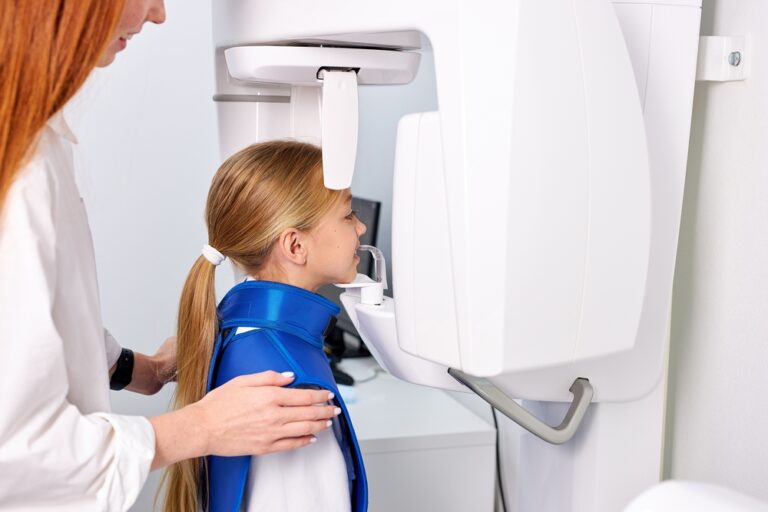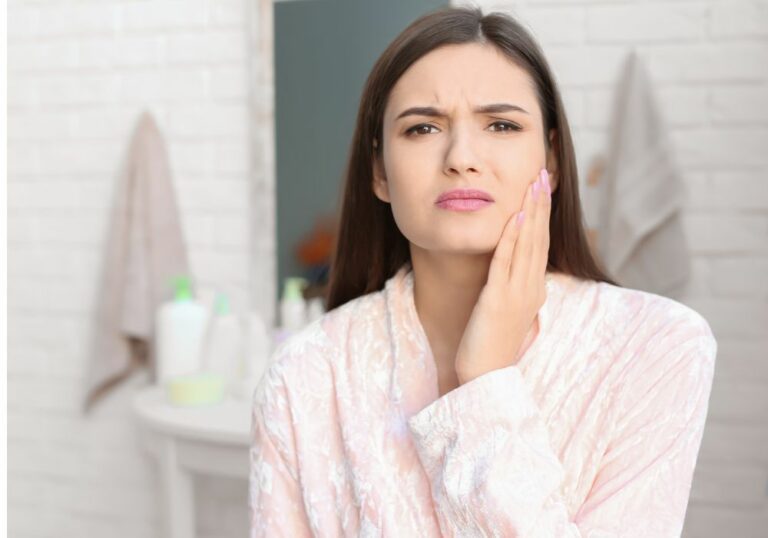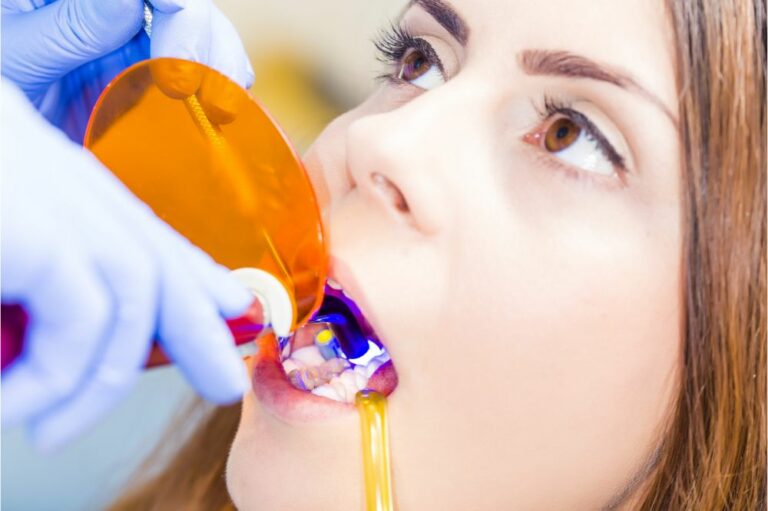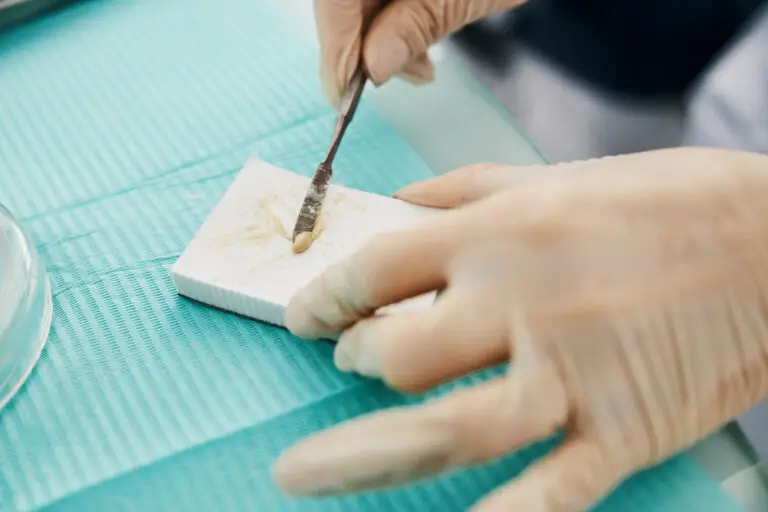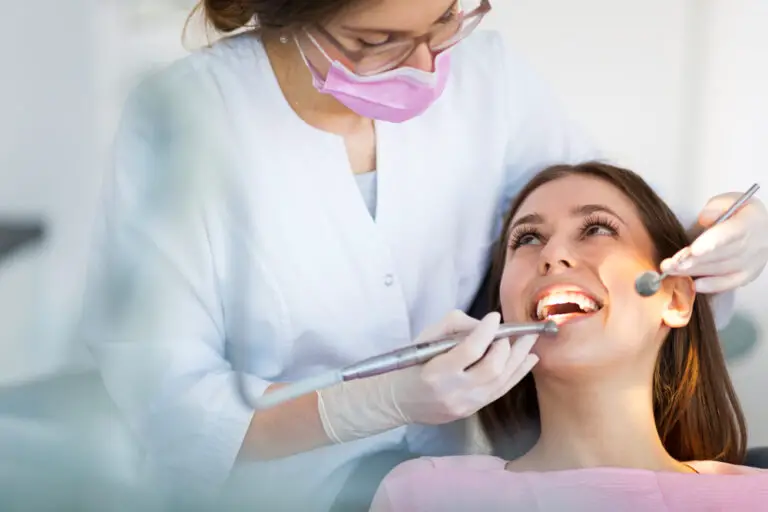Invisalign has revolutionized orthodontic treatment by providing a convenient, comfortable and effective way to straighten teeth using a series of customized, clear aligners. However, some patients find that after completing Invisalign treatment, their teeth are still not perfectly straight and have a slight crookedness or crowding. There are several potential reasons why teeth may not be completely straight after Invisalign.
Common causes of residual crookedness after Invisalign
1. Initial malocclusion severity
The severity of the original malocclusion (misalignment of teeth) plays a major role in how much straightening can be accomplished with Invisalign. People with minor spacing or crowding issues generally see excellent improvement in the alignment of their teeth with Invisalign treatment. However, those with more severe baseline dental malocclusions involving large overjets, deep overbites, crooked arches or considerable crowding, may be left with some lingering crookedness or crowding at the end of treatment. The more substantial the initial problem, the harder it can be to achieve ideal results solely using removable plastic aligners.
2. Limitations of aligner movements
While Invisalign aligners are very effective at moving teeth in most cases, there are some limitations in the types of movements they can achieve. Specifically, rotations, tipping and tilting of teeth are movements that are easily accomplished using Invisalign. However, significant bodily movement of teeth (moving the entire tooth including roots vertically and/or horizontally) is more challenging with Invisalign aligners. Additionally, other complex orthodontic movements like closing or opening large spaces between teeth or significantly expanding/contracting dental arches can be difficult to fully correct using only removable aligners. Any movements that could not be fully accomplished during the initial Invisalign treatment may ultimately leave patients with some residual crowding or imperfect alignment.
3. Lack of ideal root parallelism
For teeth to be positioned in the most ideal and stable alignment, the roots of the teeth should be positioned so they are completely parallel to each other. This root parallelism helps anchor the teeth properly in the jawbone. However, Invisalign aligners can only apply forces to move the crown of the tooth and have no ability to reposition the root or impact how the tooth settles into the jawbone. This means roots may ultimately be left slightly crooked or misaligned, even when the crowns of the teeth appear straight, causing a minor residual crookedness in the crowns.
4. Issues with dental settling after treatment

Teeth can naturally settle and shift slightly over time after any type of orthodontic treatment as the teeth seek a stable position within the jawbone. The retention phase after Invisalign typically involves wearing retainers full-time for the first 6 months and then nightly long-term to help hold the teeth in their new positions. However, some minor settling or shifting is inevitable once retainers are discontinued or worn less consistently. This settling can allow teeth to drift slightly out of position, leading to minor crowding relapse.
5. Undetected underlying dental issues
In some cases, there may be underlying dental developmental or structural issues that can contribute to crooked teeth but go undetected during the initial Invisalign assessment and treatment planning phases. Examples include deficient enamel, abnormal tooth shapes, supernumerary teeth, ankylosed teeth or abnormally shaped roots. These types of dental anomalies can limit the amount of straightening possible, even with custom-fit aligners and perfectly executed Invisalign treatment.
6. Poor compliance with Invisalign treatment protocols
Since Invisalign aligners are removable by the patient, the system is highly dependent on excellent patient compliance in order to achieve the desired outcome. Patients who do not wear their aligners for the prescribed 22+ hours per day or who repeatedly miss appointments may have less-than-ideal results with more residual crowding. Skipping days or wearing aligners for shorter periods than directed allows teeth to shift back towards their original positions and lengthens the time needed to complete treatment. This increases the chances of crooked teeth or crowding after treatment.
Evaluating residual crookedness after Invisalign
If you find that you still have crooked, crowded, or uneven teeth after completing your initial Invisalign treatment, try not to panic. There are a few key steps you can take to improve the situation:
- Consult your orthodontist – Schedule an appointment to have your treating orthodontist thoroughly evaluate your teeth at the completion of treatment. They will be able to assess the specific cause, location, and severity of any residual crowding or crookedness. An expert orthodontist will have the knowledge and experience to diagnose why your teeth did not fully straighten as planned.
- Consider ordering additional aligner refinement trays – Based on your orthodontist’s recommendation, ordering additional sets of custom Invisalign trays can help tackle any lingering crookedness issues. This refinement treatment may take several additional months but can often further improve alignment from the first round of treatment.
- Discuss dental restorations – For some complex cases with residual crowding, small dental restorations like dental bonding, enamel shaping, or veneers applied to carefully selected teeth can help completely finish and perfect the straightening process after Invisalign.
- Accept some imperfection – Keep a realistic outlook that even traditional braces rarely yield absolutely perfectly straight teeth for every patient. If the residual crowding is very minor and not affecting function or aesthetics, simply accepting your mostly improved smile may be a reasonable option after weighing the alternatives.
- Implement retention diligently – Be extremely diligent about wearing any retainers or taking other steps to prevent relapse as directed by your orthodontist. This will help you maintain the significant improvements you were able to achieve with your first round of Invisalign treatment.
Options for further straightening of teeth after Invisalign
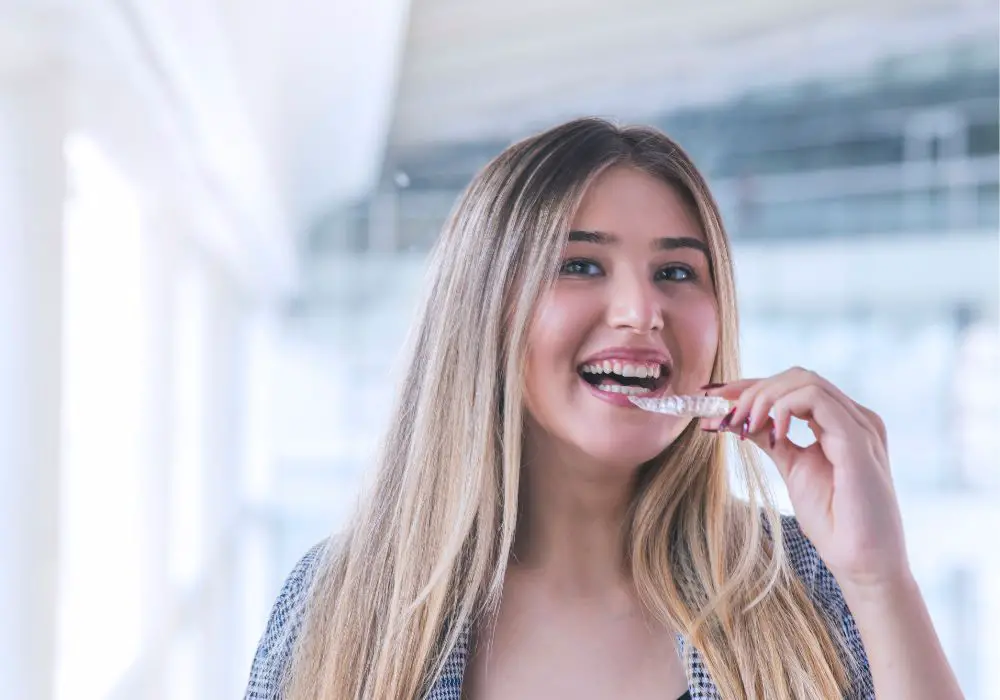
If bothersome crookedness persists to a degree that is unsatisfactory for oral function or aesthetics, there are several options available to continue the teeth straightening process beyond the standard Invisalign treatment:
Additional Invisalign treatment
Doing another round of Invisalign, with new impressions and fresh sets of aligners, can help if the original treatment did not fully complete all desired movements. Additional aligners can focus on specific problem areas that need more attention. In some cases, attachments, interarch elastics, longer treatment times, or other enhancements may be necessary for optimal results. Studies show that additional Invisalign aligners can further improve alignment in about 70% of revision cases.
Fixed braces
In some instances where Invisalign could not fully correct complex malocclusions, fixed braces may be recommended as a follow-up. Traditional braces with brackets and wires allow orthodontists to apply specialized forces to accomplish movements that removable aligners cannot achieve alone. Fixed braces may take longer but provide the highest level of control for finishing the most challenging cases.
Limited orthodontic treatment
Short-term fixed braces focusing only on the specific teeth or areas that most need straightening is another option. This less invasive approach places brackets and wires only where they are needed most, without full bands on every tooth. It can provide targeted improvement in smile aesthetics and function.
Clear correct aligners from other companies
There are now several companies offering clear aligner therapy similar to Invisalign. Different aligner materials and tooth movement algorithms used by companies like ClearCorrect, SmileDirectClub or Candid may benefit some cases that did not have complete improvement with Invisalign.
Cosmetic restorations
Dental veneers, bonding, or crowns placed on select crooked teeth can improve smile aesthetics without further orthodontics. However, this is a more invasive approach that requires permanently altering the teeth. It also has a higher cost compared to additional orthodontic treatment options.
Maintaining a beautiful smile after Invisalign treatment
Whether you pursue more orthodontic correction or not, maintaining your results and oral health should be a priority after Invisalign treatment:
- Wear retainers as prescribed – Be extremely compliant with wearing retainers or other retention methods exactly as directed by your orthodontist. Retainers keep teeth stabilized in their new positions and prevent shifting or crowding relapse.
- See your dentist regularly – Follow up with your general dentist every 6 months for dental exams and cleanings. This allows them to monitor your oral health and catch any potential dental problems early before they undermine your orthodontic results.
- Protect your teeth from trauma – Wear a mouthguard when playing sports or avoid habits like chewing on ice, pens, nails or other hard items that could crack or loosen teeth. Trauma can cause teeth to shift or become crooked again.
- Practice excellent oral hygiene – Brush your teeth twice and floss thoroughly once daily. Use any recommended cleaners for your retainers. Good hygiene prevents decay, gum disease and other issues that could affect alignment.
- Limit staining drinks – Coffee, tea, red wine and other staining beverages can discolor teeth and retainers. Drink these beverages in moderation and use a straw to minimize contact with teeth.
With diligent retention and dental care, you have an excellent chance of maintaining your new, straighter, more beautiful smile for years to come! Let your orthodontist know if you see any concerning changes.
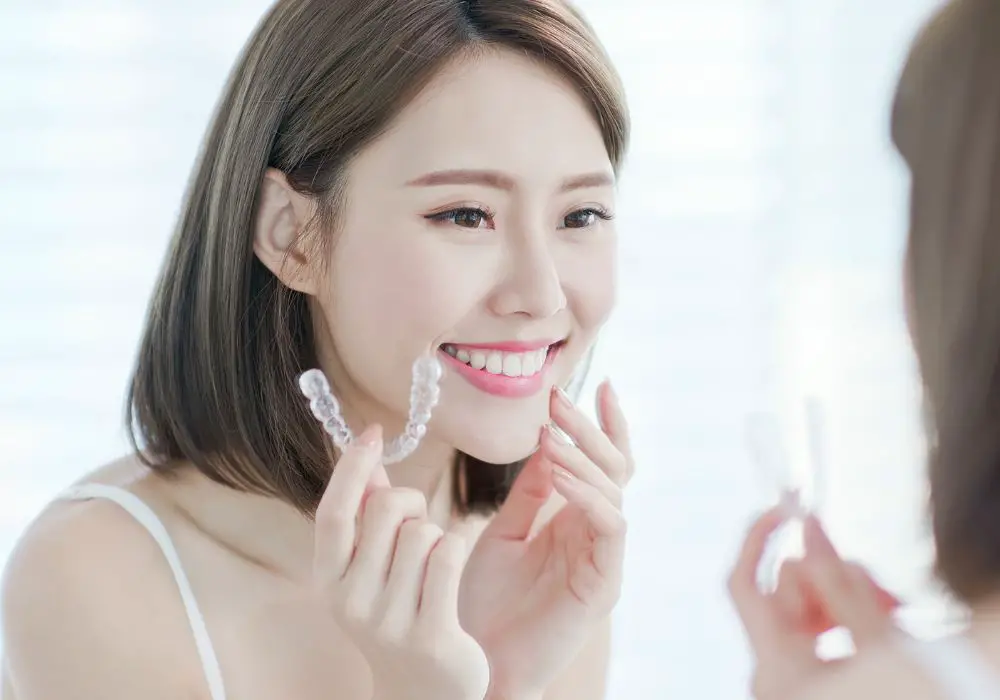
Frequently Asked Questions
Q: How long will it take to fix residual crowding with more Invisalign treatment?
A: The exact time frame depends on how much crookedness remains and in which areas of the mouth. But in general, most Invisalign revision cases require 6-18 additional sets of aligners over a course of 6-12 months. More significant residual crowding may sometimes need 12-24 months of additional treatment.
Q: Can I do anything to help speed up Invisalign treatment time?
A: Being extremely compliant with Invisalign’s 22 hour per day wear regimen is crucial for timely results. Some patients also feel that supplemental treatments like AcceleDent or Propel can help accelerate overall tooth movements. Discuss these options with your orthodontist.
Q: Are clear aligner trays from other companies better than Invisalign for finishing previously untreated crooked teeth?
A: Each company has their own approach, with minor differences in materials and protocols that may suit some cases better than others. Popular clear aligner brands like ClearCorrect and SmileDirect Club can provide successful straightening for mild to moderate crookedness. Consult your orthodontist about which company’s aligners may work best for your particular needs.
Q: Does some crookedness coming back later in life mean my original Invisalign treatment failed?
A: Not necessarily. Minor crowding or overlapping relapse over decades of aging is common, as teeth naturally tend to shift gradually over time. The retention phase after Invisalign is critical for holding corrections stable as long as possible. Continued retainer wear and excellent oral hygiene helps maximize the longevity of your Invisalign results.
Q: Can Invisalign work to fix just my crooked bottom teeth if I had braces only on the top previously?
A: Yes, Invisalign is frequently used to successfully straighten just one arch of teeth, without treating both top and bottom. It can resolve minor to moderate lower arch crowding or spacing, even if traditional orthodontic treatment was previously done only on the upper arch years ago.

